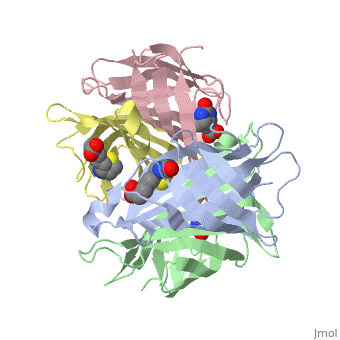Molecular Playground/Streptavidin
From Proteopedia
(Difference between revisions)
(→The Use of Streptavidin to Functionalize Materials) |
|||
| Line 1: | Line 1: | ||
| - | == The Use of Streptavidin to Functionalize Materials == | + | == The Use of Streptavidin/Biotin Complex to Functionalize Materials == |
Streptavidin is a protein best known for its ability to bind to biotin creating the strongest non-covalent interaction in nature. | Streptavidin is a protein best known for its ability to bind to biotin creating the strongest non-covalent interaction in nature. | ||
| Line 9: | Line 9: | ||
Anything in this section will appear adjacent to the 3D structure and will be scrollable. | Anything in this section will appear adjacent to the 3D structure and will be scrollable. | ||
| - | <scene name='56/567309/Biotin_attachment/1'>TextToBeDisplayed</scene> | ||
| + | <scene name='56/567309/F/1'>Binding site</scene> | ||
</StructureSection> | </StructureSection> | ||
| - | <scene name='56/567309/Protein_1/1'>Biotin</scene> | ||
| - | |||
| - | <scene name='56/567309/F/1'>TextToBeDisplayed</scene> | ||
Revision as of 18:33, 5 November 2013
The Use of Streptavidin/Biotin Complex to Functionalize Materials
Streptavidin is a protein best known for its ability to bind to biotin creating the strongest non-covalent interaction in nature.
One of the CBI Molecules being studied in the University of Massachusetts Amherst Chemistry-Biology Interface Program at UMass Amherst and on display at the Molecular Playground.
| |||||||||||

